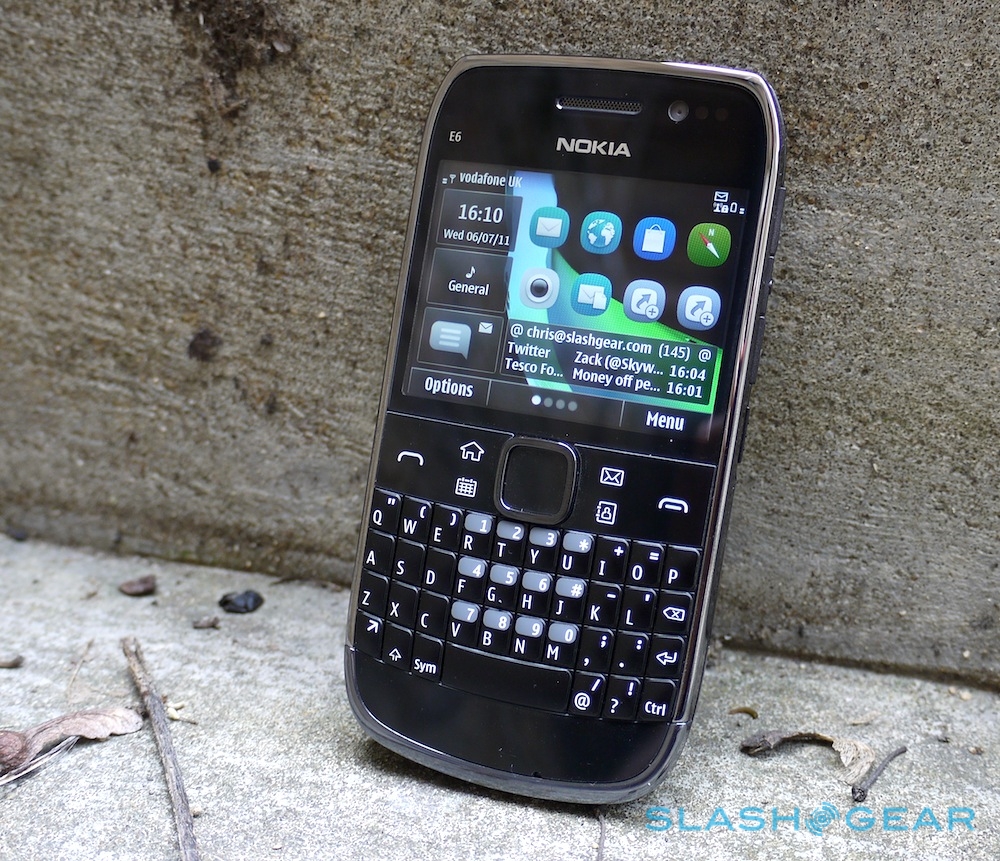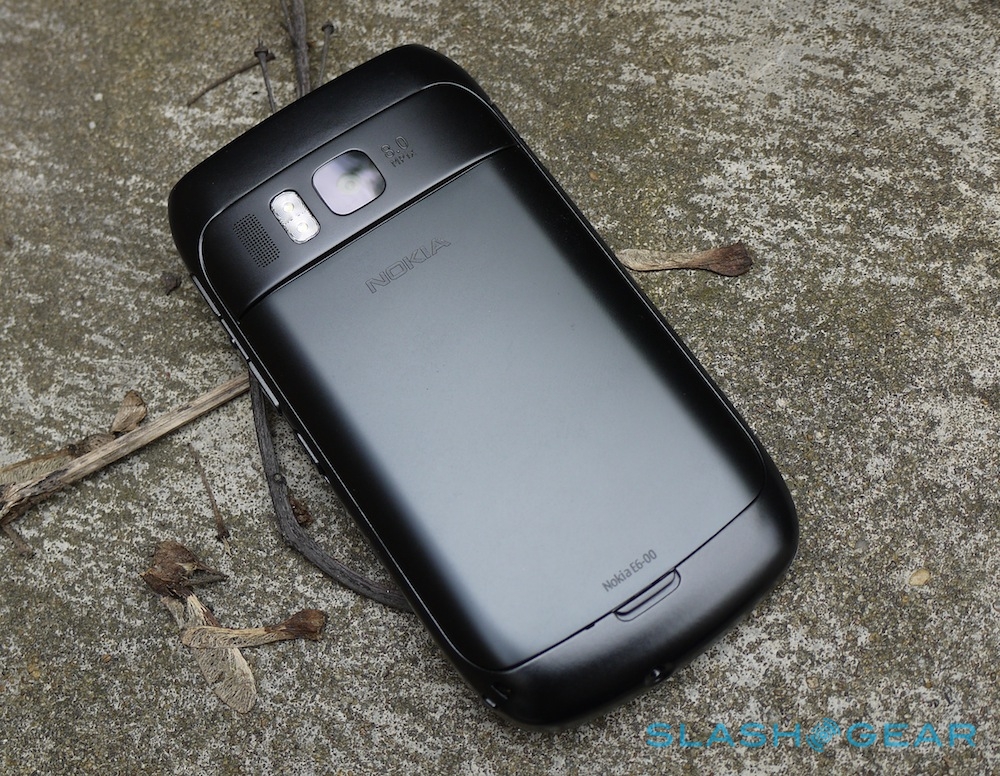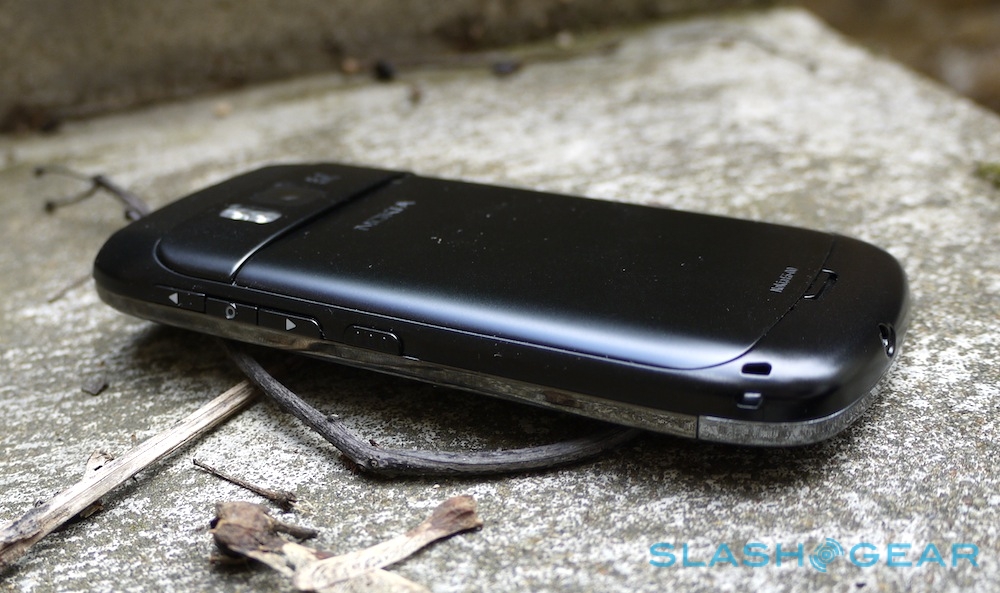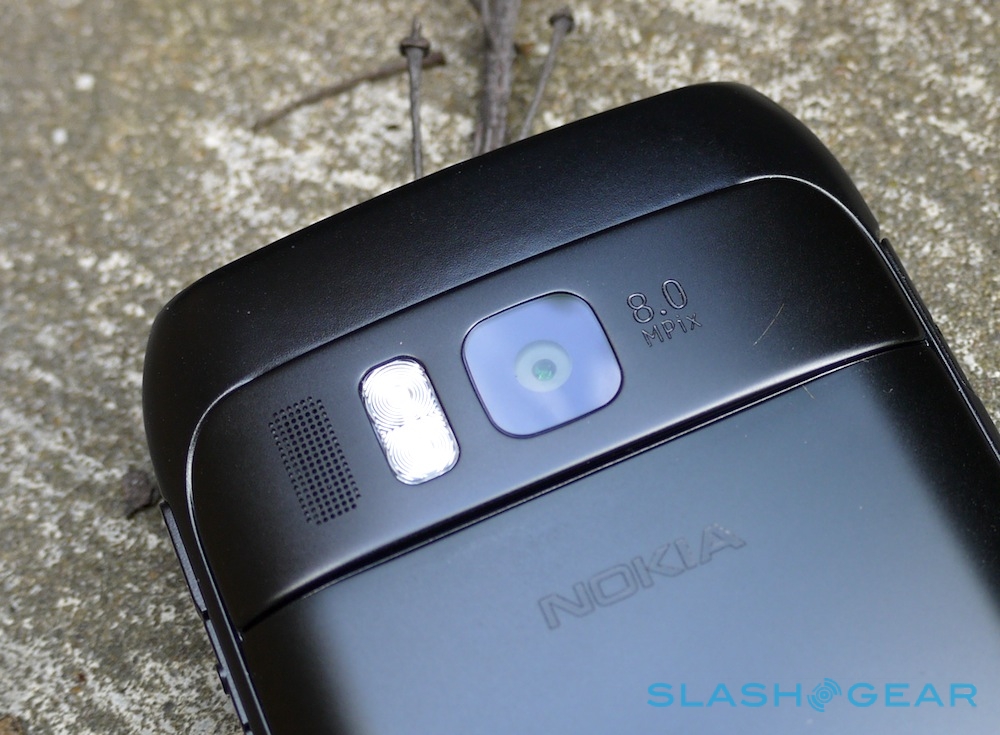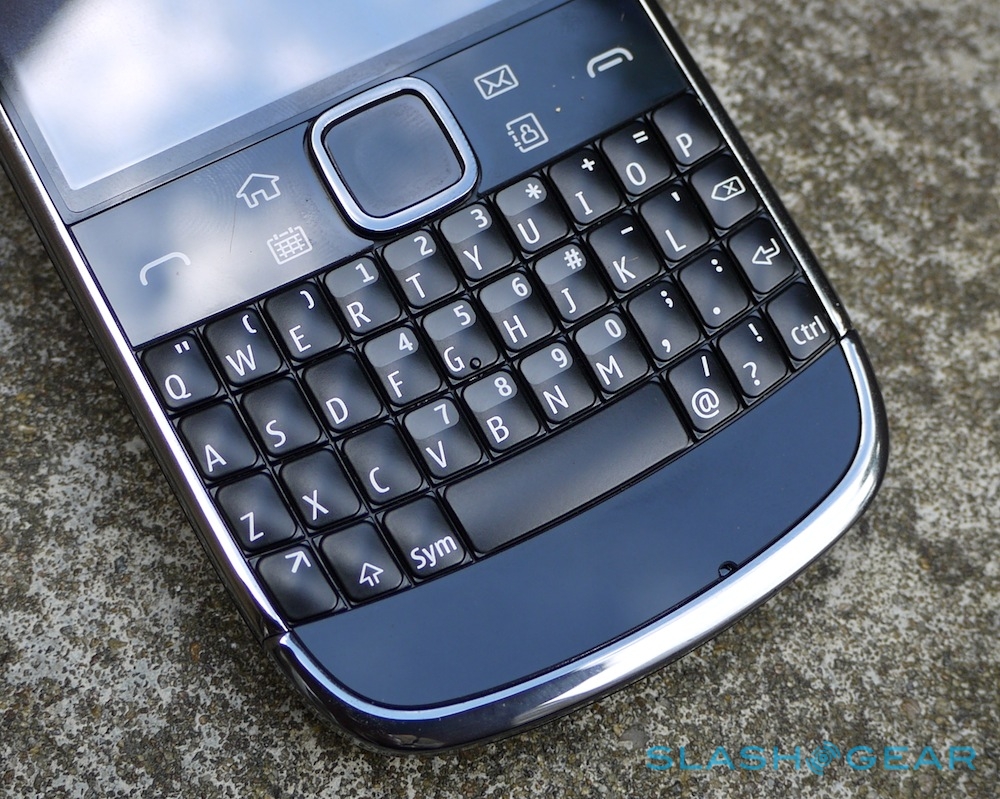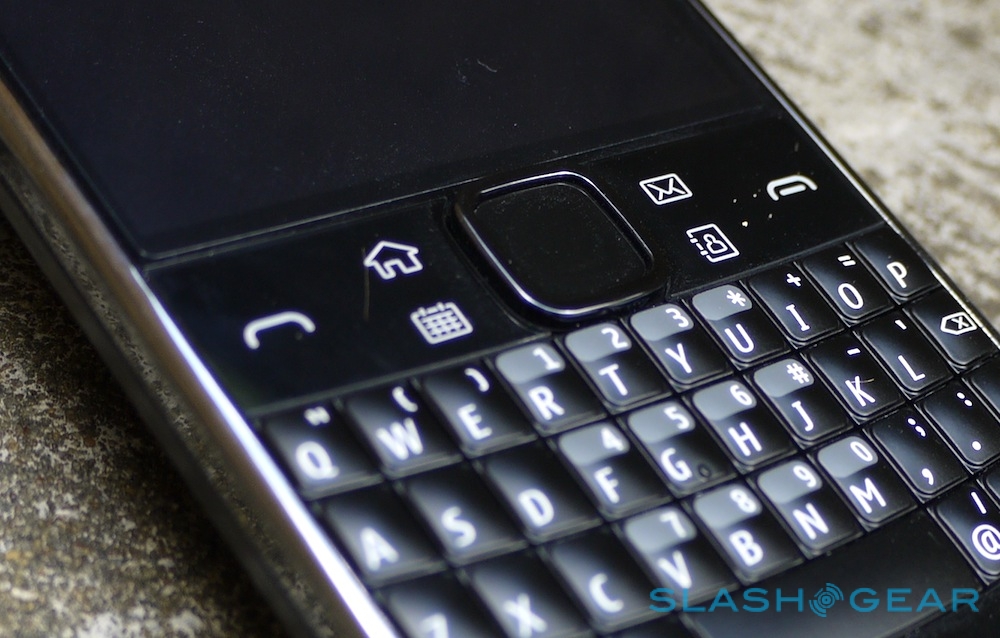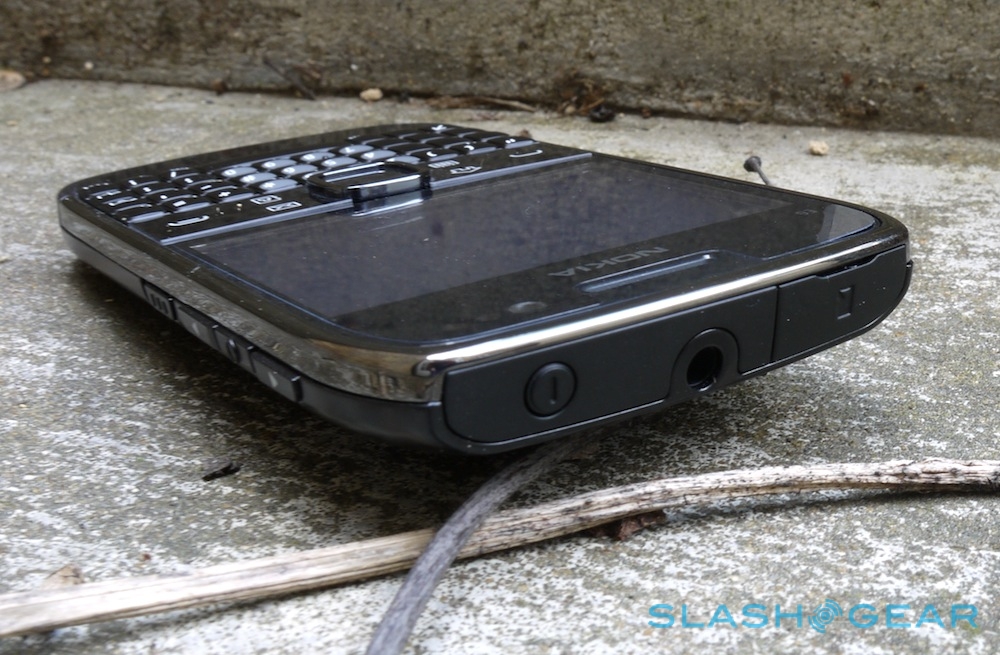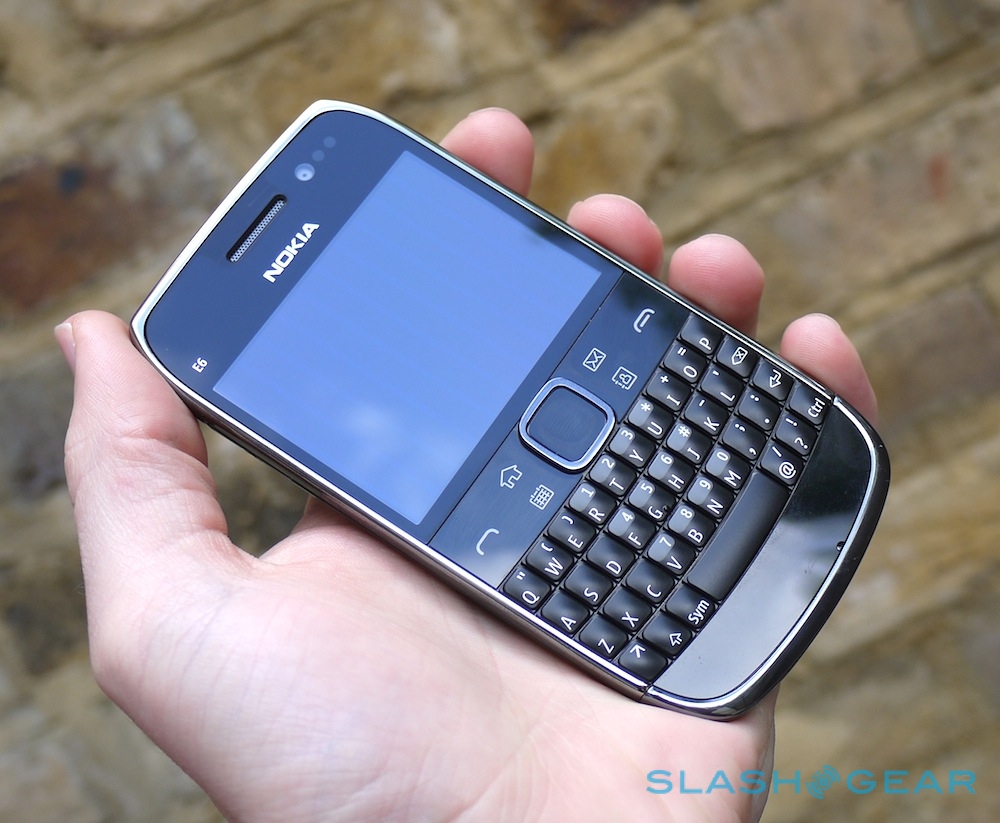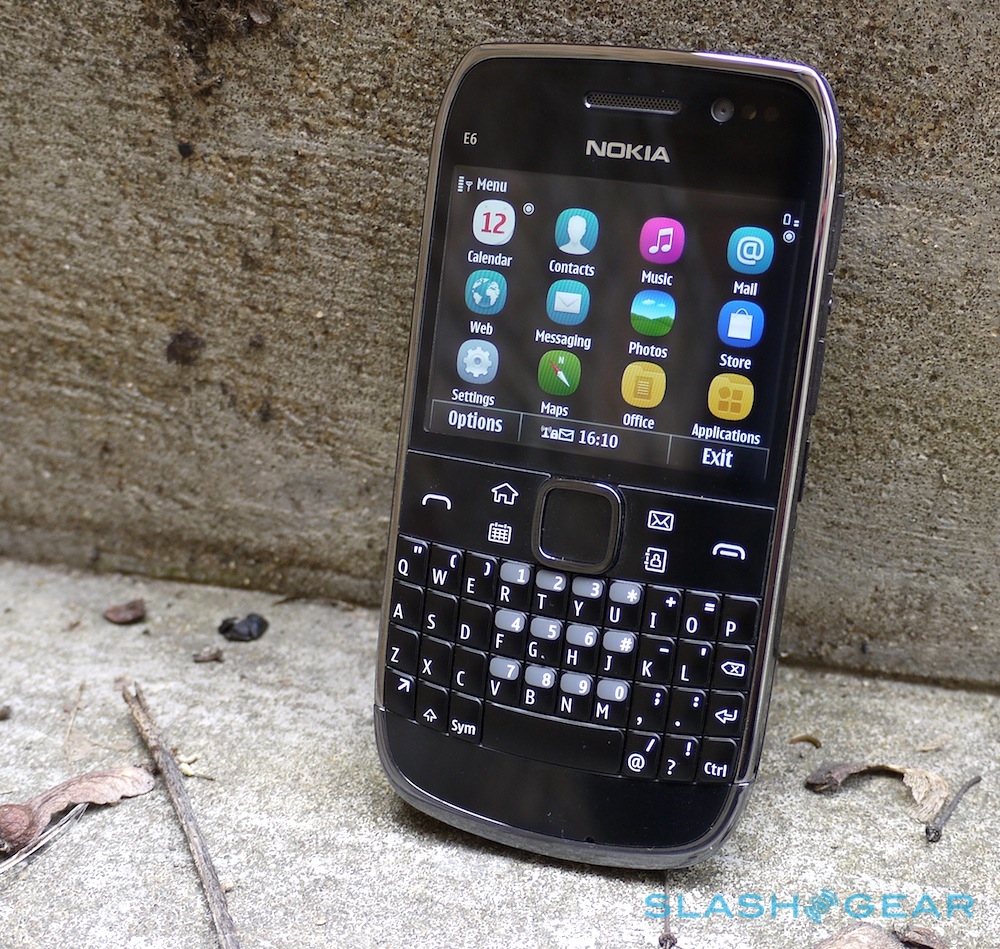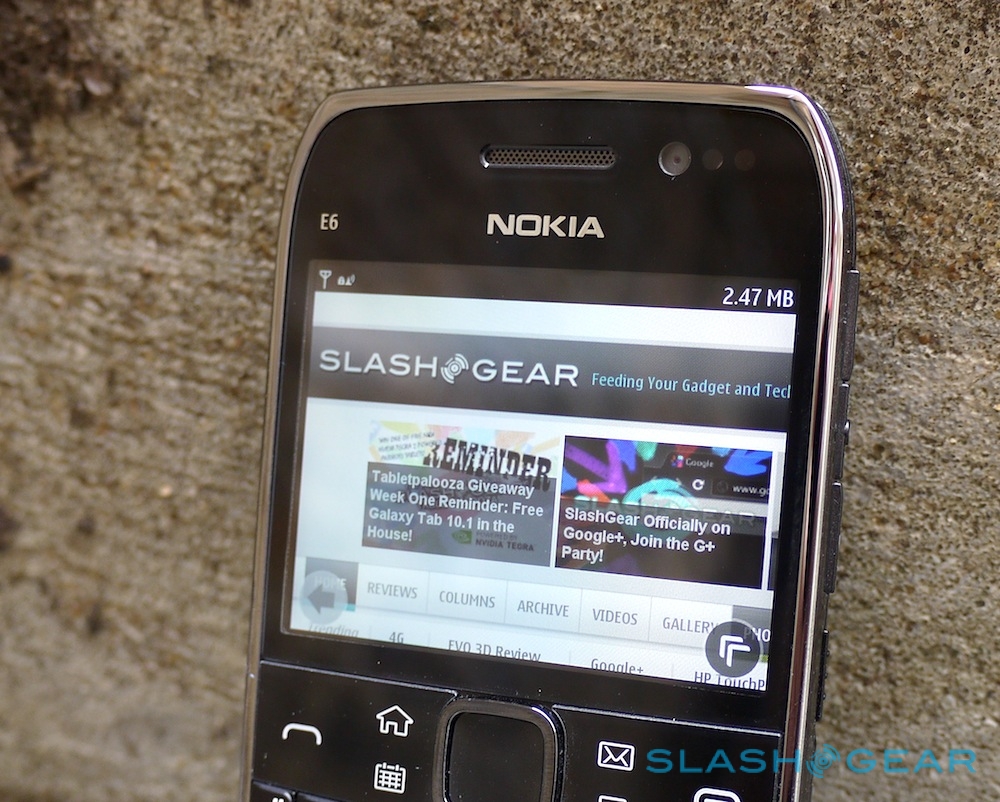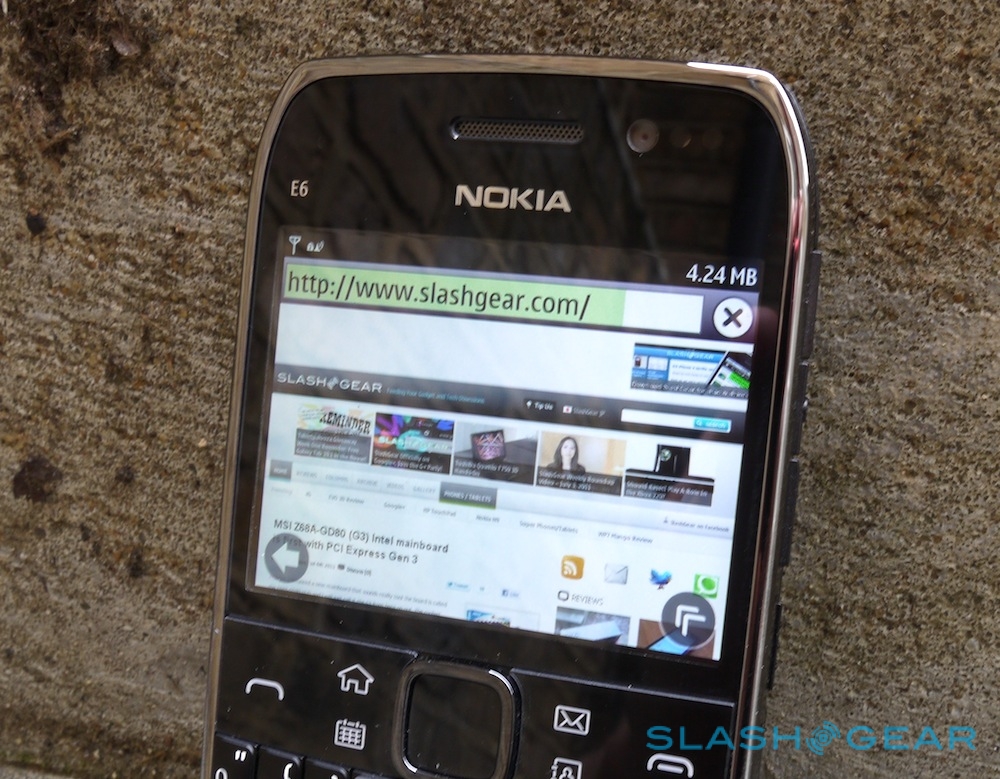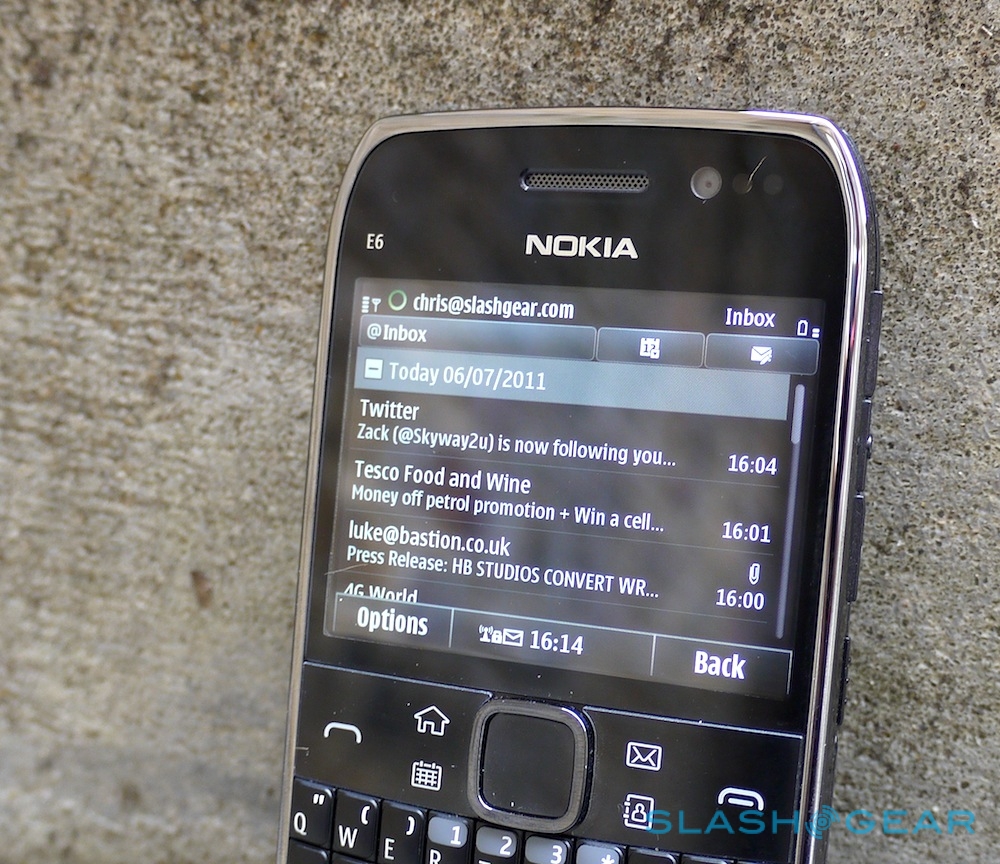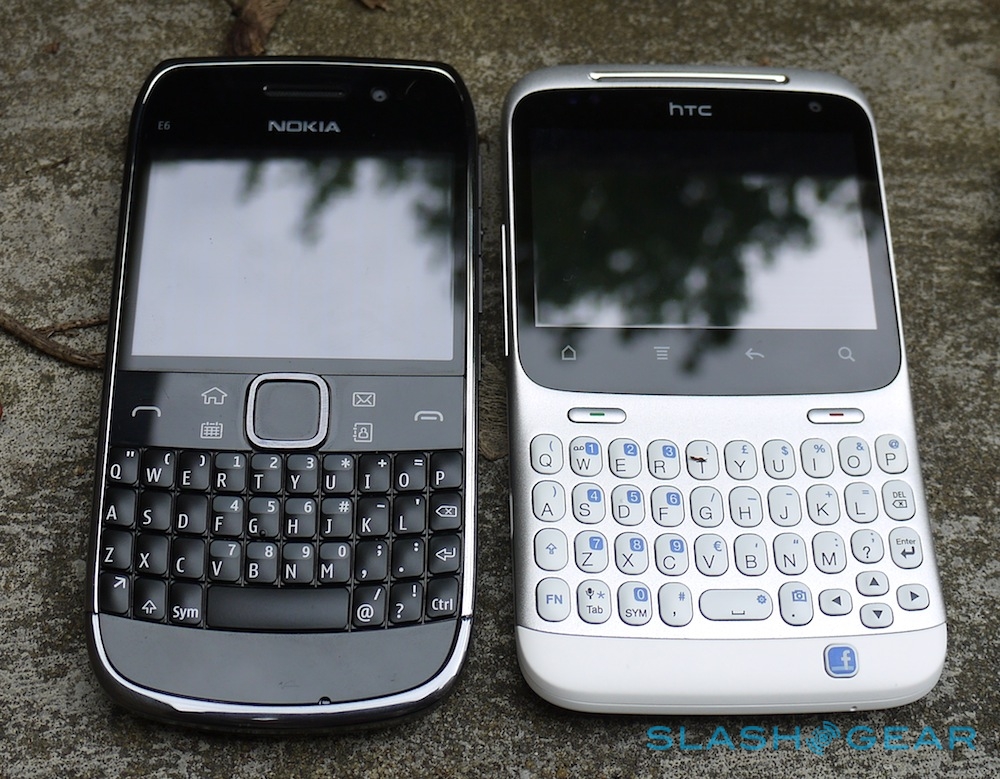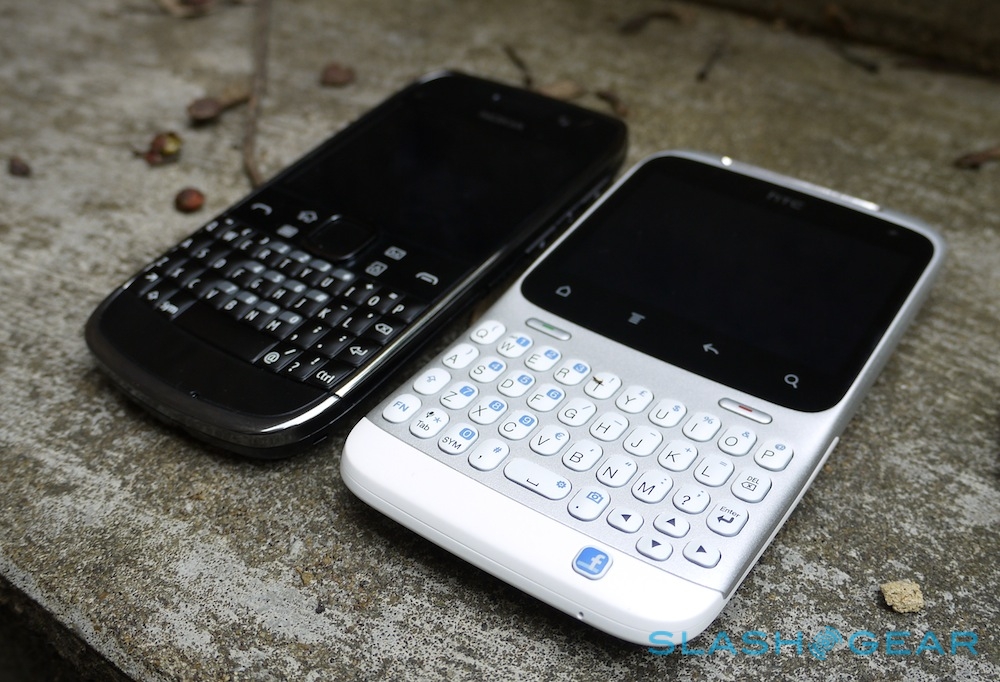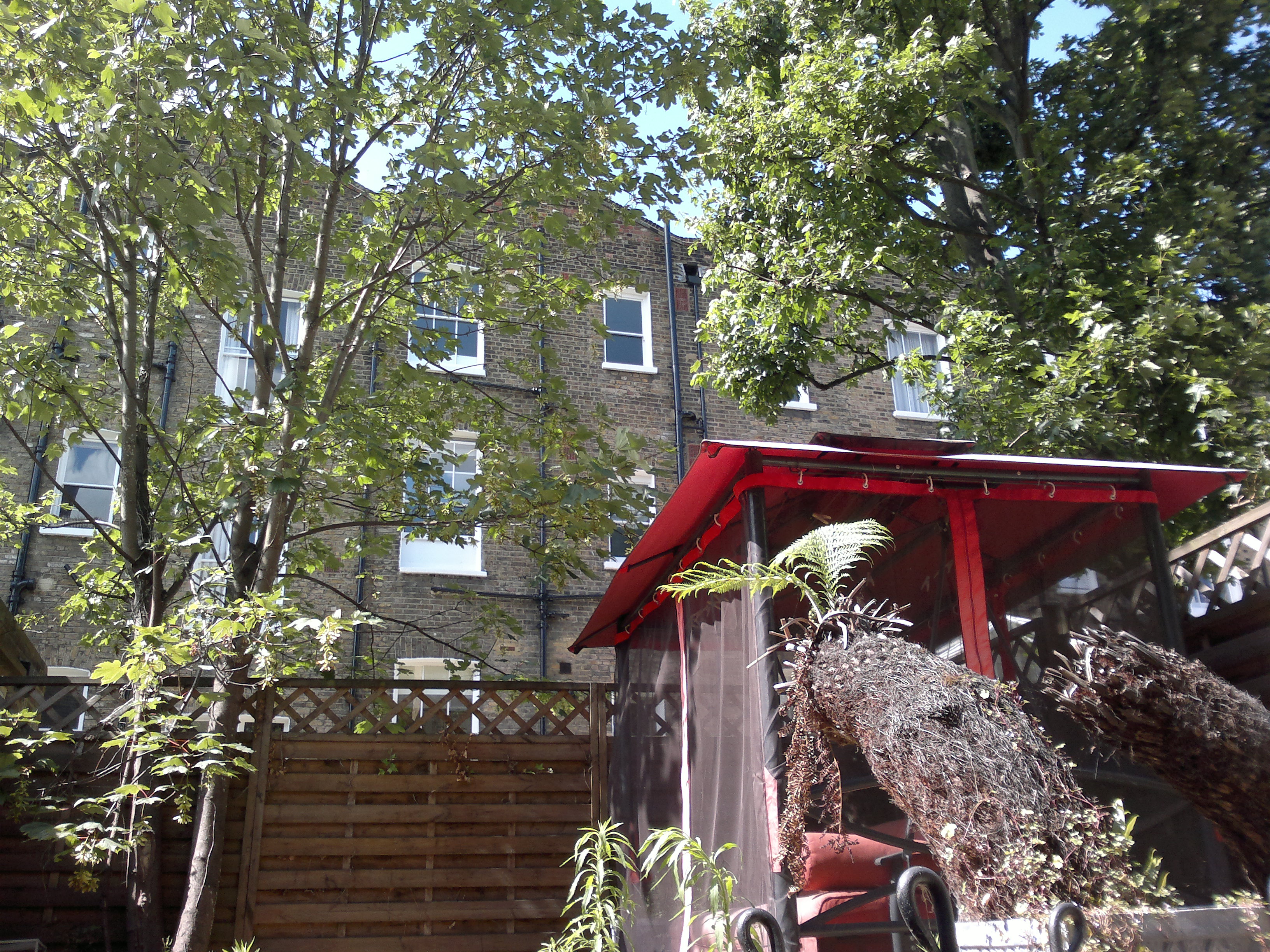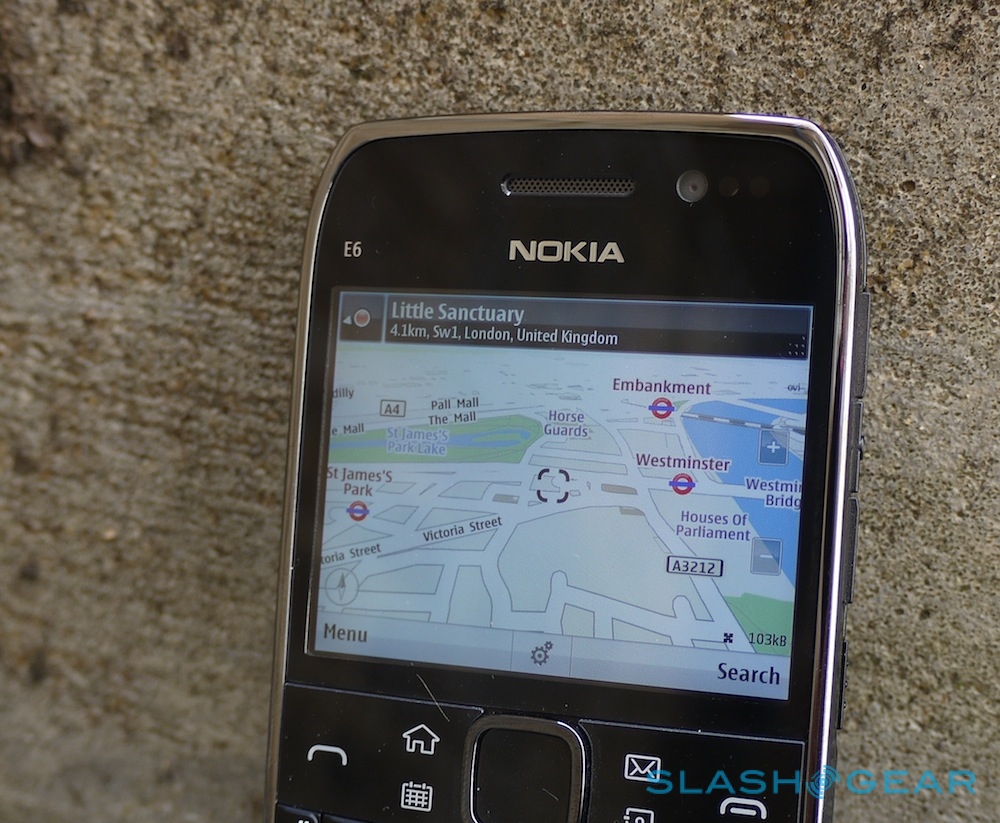Nokia E6 Review
BlackBerry may be the name associated with QWERTY messaging phones, but there's a vocal cadre of Nokia users all too keen to talk about the merits of the Finnish company's keyboard-blessed candybars. The E72 met with mixed reactions, failing to quite capture affection the way its E71 predecessor did; now we have the E6 (aka Nokia E6-00), pairing keyboard and touchscreen and offering a taste of the latest Symbian flavor, Anna. Is the E6 enough to distract us from the rapid approach of Nokia's first Windows Phones? Check out the full SlashGear review after the cut.
Hardware
The E6's hardware heritage is clear, though Nokia hasn't missed the opportunity to tighten up the package along the way. Measuring in at 115.5 x 59 x 10.5 mm and 133g, it's a solid, reassuringly weighty device finished in sturdy black plastic and lifted with a chrome bezel. The camera slice on the back protrudes somewhat, spoiling the clean lines, though you can drop it into a front trouser pocket without issue. A sheet of toughened Gorilla Glass protects the screen.
Up front, Nokia has used both a touchscreen display and a QWERTY keyboard, allowing it to ditch the soft-key buttons from the controls running in-between. Now, there's send/end, home, calendar, mail and contacts buttons, as well as a D-pad. Unlike on the E72, that D-pad doesn't function as an optical trackpad, though we didn't miss the option.
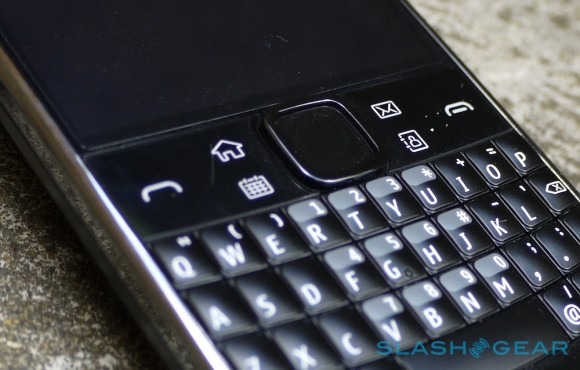
The display itself is something special, only 2.46-inches in size but running at 640 x 480 VGA resolution which makes for a deliciously dense 326 pixels per inch. That, you may recall, is the same as Apple's iPhone 4 "Retina Display" though, of course, on a far smaller panel. A TFT LCD 16.7m color panel, it may not be a Clear Black screen as on the X7 but it's impressive nonetheless, icons and images being smooth and colors bright and clear. The capacitive touch is responsive and lag-free, and works well with the tiny haptic feedback vibration Nokia enables by default.
As for the QWERTY 'board, it spreads its layout across four rows – meaning numbers are clustered as a secondary function in the middle – and has dedicated shift, function, symbol, comma, period, @ and question mark keys. The buttons themselves are slightly domed and have a matte finish rather than the slippery gloss of the black plastic below. They're also progressively backlit, the LED illumination – like that of the touchscreen – being managed via the ambient light sensor above the display.
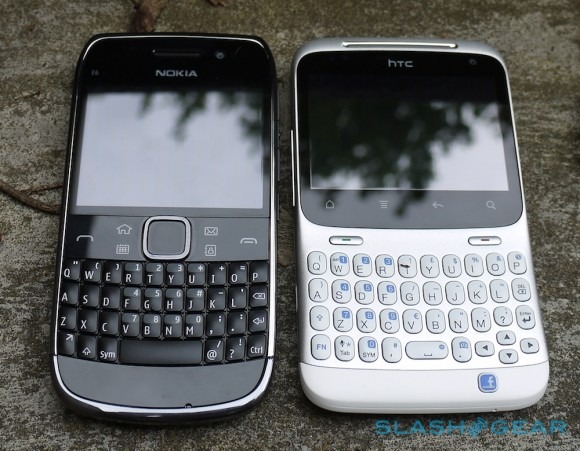
A messaging candybar lives and dies by the usability of its keyboard, and the E6 is a solid performer on that front. We'd prefer a little more space in-between each key – the HTC ChaCha spreads its buttons more, making for less finger overlap, though obviously ends up being a broader device altogether as a result – though the software auto-correct did a pretty good job of ironing out mistakes from our chubby thumbs. We also missed the double-space shortcut to insert a period at the end of a sentence, as has become popular on the iPhone, BlackBerry and other handsets.
Other controls include the power button on the top edge, alongside the 3.5mm headphone jack and, under a tiny flap, the microSD card slot; there's also volume keys on the right edge, flanking a shortcut button that, by default, triggers the voice command system. Underneath that there's a physical lock slider, easily swiped with a thumb or finger when you're holding the E6 one-handed. The microUSB port – again, with a covering flap – is on the left edge, while a Nokia charging port is on the bottom.
On the back, there's an 8-megapixel EDoF camera with a dual-LED flash – a VGA-resolution camera is on the front above the display – along with the metal battery cover door and, once you've popped out the standard 1,500 mAh BP-4L battery, the SIM card slot. In the box Nokia includes a wired headset and a charger, though no microSD card since the E6 has 8GB of internal storage of its own.
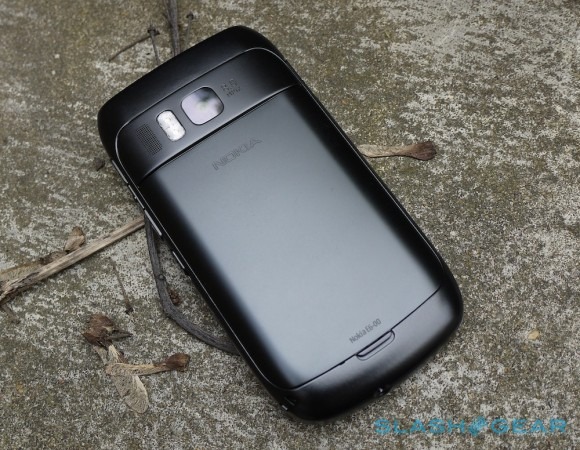
We've praised recent Nokia handsets for their superlative connectivity options, and the E6 is no different. Like the E7 and N8 before it – as well as others – there's quadband GSM/EDGE and pentaband WCDMA (850/900/1700/1900/2100): you can merrily switch between an AT&T and T-Mobile USA SIM and get 3G data no matter which. It's a significant feature we're hoping Nokia preserves for its Windows Phone range.
Along with cellular data there's WiFi b/g/n, Bluetooth 3.0, an FM radio, GPS and A-GPS, an accelerometer, digital compass and proximity sensor, USB On-the-Go support, and TV output via the 3.5mm jack, the latter two requiring optional adapter cables. Nokia isn't on the processor speed bandwagon – yet, anyhow – but inside the E6 there's a 680MHz ARM11 processor paired with a GPU and 256MB of RAM.
Software and Performance
Poor Symbian. Nokia CEO Stephen Elop did the platform no favors when he announced that it would be phased out of the next few years, with Windows Phone taking its place as the company's smartphone OS of choice. All eyes are on Q4, the launch window for the first Nokia devices running the Microsoft software, leaving the remaining Symbian phones on the roadmap to arrive already feeling outdated.
That's despite Symbian^3 on the E6 being the newest Anna version, bringing with it a refined UI, boosted browser, streamlined Nokia Maps (nee Ovi Maps) and a variety of enterprise-focused tweaks. One of the most demanded changes delivered in Anna, a portrait-aspect QWERTY keyboard, obviously isn't applicable to the E6.
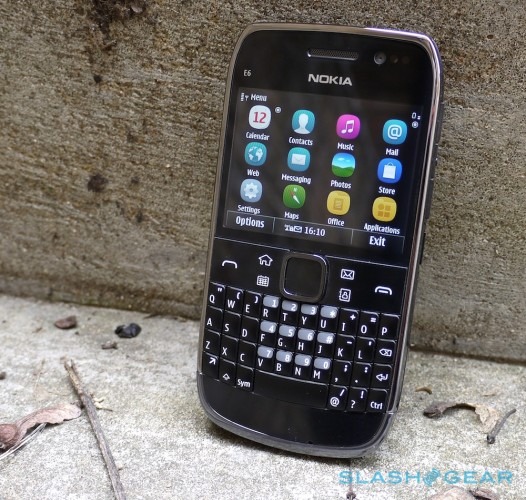
There's no denying that the new "squircle" iconography is an improvement over the graphics in previous Symbian versions, leaving the whole UI with a far more harmonious, consistent feel. Still, there's much that's the same once you get past the resin. The homescreen, for instance, has four panes by default (five maximum) but still the same fixed widget positioning; thanks to the size and resolution of the E6's touchscreen, though, you can only have three widgets per pane, rather than the six of the X7 for instance. The remaining space down the left hand side of the display is occupied by three persistent blocks for time/date, profile and notifications, such as missed calls, new messages and calendar alerts.
Happily it's all very usable one-handed, with the length of the E6 being scaled to suit stretching a thumb up to tap at the display as well as down to the keyboard. It's unlikely to win over those who bemoaned Symbian's aesthetic appeal – or lack of – in comparison to iOS or Android, however, though the high pixel density makes what talents the E6 does have shine. The usability of the minimum font size, for instance, is limited more by our eyesight than it is the smoothness of the display.
Browser and Messaging
The main change we've been looking forward to with Anna is the update to the browser, hopefully bringing Symbian more in line with what iOS and Android offer. Now up to v7.2 and still supporting Flash Lite 4.0, the biggest change is performance: page rendering is swifter than on previous Symbian phones, despite the identical CPU, while panning around a heavy webpage is – once the page is loaded – smoother too. Pinch-zooming is supported, as is double-tapping to zoom.
It's all an improvement on what came before, but it still lags behind rival devices. On the ChaCha, for instance, we were able to scroll around the page while still loading without things juddering to a halt, while pinch-zooming was also more responsive. Pages themselves were quicker to render, despite using the same WiFi connection. Where the E6 edges ahead is, again, in its display resolution, with text clean and – if your eyes are up to it – readable from lower levels of zoom than on the ChaCha's 480 x 320 panel.
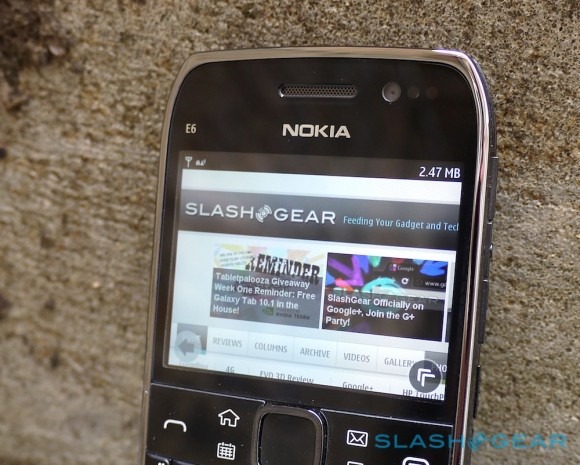
In the time between our E72 review and the E6 hitting our test bench, SlashGear – like many other people and organizations – has migrated from Exchange to Google for email, calendar, contacts and other services. The E6 has preconfigured setup wizards for Gmail, Exchange, Windows Live and Yahoo! accounts, along with generic POP/IMAP support, though barring Exchange there's no true push-email, only the somewhat vague "soonest" setting. Beyond that, though, it's a solid implementation, with multiple email accounts supported simultaneously – though no universal inbox – and sensible keyboard shortcuts for things like replying or starting new messages. Unfortunately, the homescreen email widget only shows the two most recent mails, and there's no way to expand that.
Unlike on other platforms, punching in your Google account details doesn't sync your calendar entries, and nor does it automatically pull down your contacts into the E6's address book. You can search the server for contacts, though. Social networking, meanwhile, is handled by the Nokia Social app, which offers Facebook and Twitter support along with a basic homescreen widget. It's not as fully integrated as we've seen on Android. Carried over from previous Symbian versions is the native SIP VoIP support, which works well.
Nokia Maps and Apps
Nokia Maps is the company's alternative to Google Maps and other navigation apps, and while there's a learning curve if you're familiar with Android, after a while it's hard not to be impressed. Like Google, Nokia offers free turn-by-turn navigations with voice prompts; there's also support for pedestrian routes and public transportation where available. Unlike Google Maps, which only caches certain recently-accessed geographies, Nokia Maps can download entire country databases for true offline use. Going abroad and loath to stump up for sky-high roaming fees but still want to find your way around? Download the maps in advance and you can shut your phone's data connection off but still get directions. There's also point-of-interest and review information through Nokia's partners like Lonely Planet and Qype. GPS locks are fast and Nokia Maps is generally responsive.
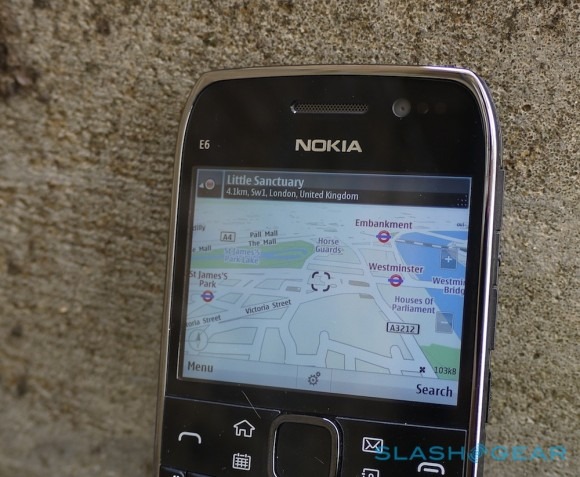
Of course, that prowess won't be limited to Symbian for long: as part of the Windows Phone deal, Microsoft – and the other OEMs using the platform – will gain access to the NAVTEQ mapping data and other functionality Nokia has developed, though that's not expected to happen for a while yet.
Nokia's Ovi Store is the company's equivalent of the App Store on iOS or Android Market, and there's a fair amount of choice there. What limits that somewhat is the VGA resolution of the E6's screen, which is unusual among Nokia devices. Until developers get up to speed with it – which could simply be a case of flagging that their app is VGA-compatible – there'll be some omissions, though we still found popular titles like Skype, Opera Mobile and Gravity.
While Nokia is bullish about the Ovi Store's future, despite the company's focus shifting elsewhere from Symbian, we struggle to be quite so confident. Developers are already wary of spreading themselves too thinly across two platforms, such as Android and iOS, and we can see a time where Symbian falls short of the latest software technology simply because all the attention and investment is elsewhere. Perhaps that's not such a great concern for a business-centric handset like the E6, but this won't be the last Symbian Anna device to face the same precarious future.
Camera
Nokia has built a reputation on great cellphone cameras in recent years, though it has also insisted on pushing ahead with its EDoF "full focus" optics on certain models. It was a frustration on the E7 and it's carried over to the E6, which also has an 8-megapixel shooter with dual-LED flash. As well as stills, the smartphone can shoot 720p 25fps HD video in H.264 format, though there's no HDMI output support.
As always, the primary limitation of EDoF cameras is in macro shots, with the E6 being simply unable to get as close to subjects as autofocus cameras can. Still, with a little distance the results are far more impressive, with colors accurate but vivid and only slight over-exposure at times marring stills. The flip-side of EDoF systems is that frames themselves are captured quickly, with little lag between hitting the button and the image being taken.

Video, meanwhile, can get blurry or tear during fast pans, but otherwise shares the solid image quality of its still cousins. The E6's microphone is also sensitive, perhaps a little too much: you can hear the wind noise during our sample clip below.
Phone and Battery
Call quality is excellent, with the E6 failing to drop a single call in our testing. The earpiece is crisp and loud, while callers had no issues hearing us. The speakerphone is solid – not the loudest we've heard, but less prone to crackling at higher volumes.
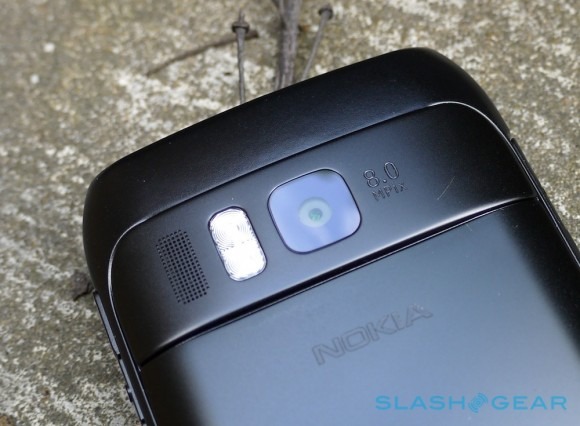
Nokia estimate up to 14 hours 48 minutes GSM talktime from the 1,500 mAh battery, or up to 681 hours GSM standby. Alternatively, the company reckons the E6 will last for nine hours of H.264 720p 30fps video playback or record 4.7 hours of 720p 25fps video, or play a solid 75 hours of audio with the radio set to offline.
In practice, with Gmail refreshing as often as we could set it, some browsing, calls, messaging and use of Nokia Maps, the E6 comfortably sailed through two days of use. Fiddle with the sync settings – taking advantage of the peak/off-peak times, for instance – and you could easily extend that further.
Wrap-Up
Viewed from the perspective of the Nokia QWERTY candybar handsets that have gone before it, the E6 is a fitting evolution. The high-resolution touchscreen makes far more sense than a pair of soft-key buttons, especially when it comes to navigating full webpages, and the keyboard shouldn't give E71/E72 upgraders much room for complaint. The handset as a whole is well-built, offers great battery life and has – macro shots aside – a decent camera, especially when you consider the overall business focus.
Sadly, in comparison to the rest of the smartphone market – and even with Symbian Anna on board – the E6 experience falls short. If you're a Microsoft Exchange user then the sync will work for you, but many individuals and businesses using Google instead, and that isn't delivered as well. The browser is a big improvement over previous Nokia handsets, but nonetheless lags behind other phones. We're not talking unbalanced comparisons with, say, dual-core superphones, either: pages on the E6 loaded slower than on the HTC ChaCha, another mid-range QWERTY phone.
The Symbian experience continues to get refined – Nokia tells us the upcoming "Belle" update will be even more impressive – but it's no great surprise that, from the perspective of the mainstream market, the platform has had its day. With Nokia itself admitting as much, focusing its efforts on Windows Phone, it's hard not to see the E6 as part of a "final hurrah" to help bridge the company's ailing fortunes until the Microsoft-powered cavalry arrives later in the year. That the E6 would be, for many, a capable business phone is undoubtedly true; even so, were it us facing a new two-year agreement, we'd wait until something running Windows Phone (or perhaps even MeeGo) arrives before we embraced the Nokia logo.

